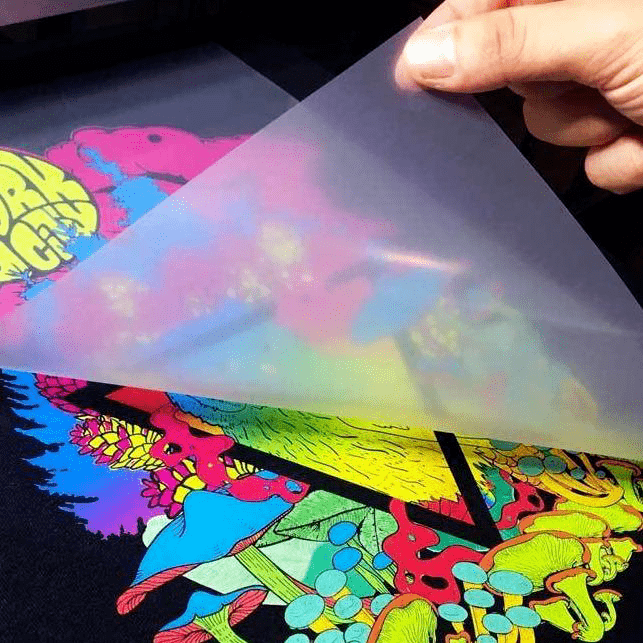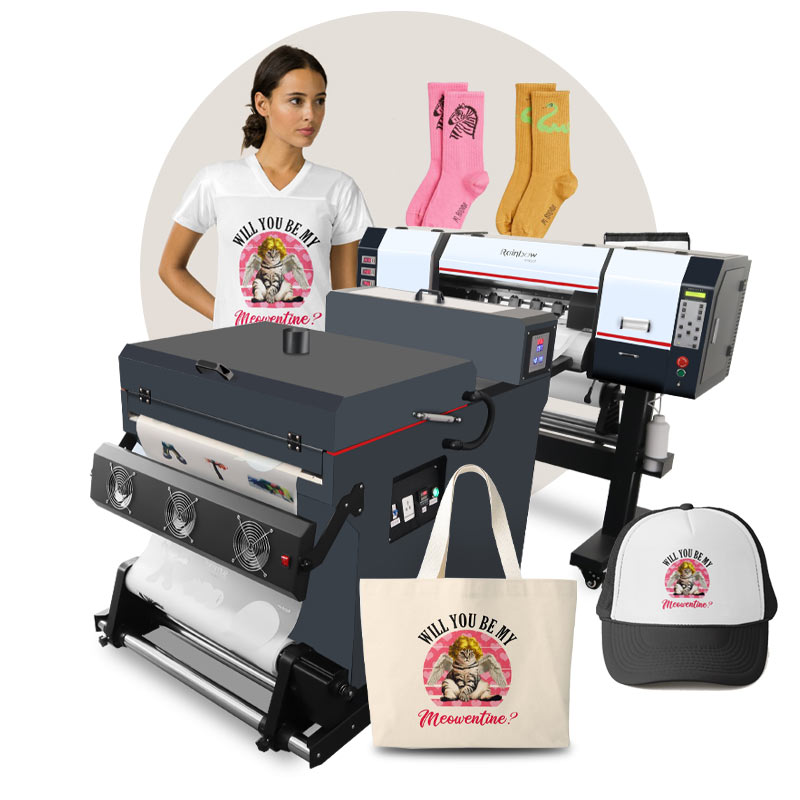Taking advantage of the Power of DTF Printing: Techniques for High-Quality Material Layouts
Taking advantage of the Power of DTF Printing: Techniques for High-Quality Material Layouts
Blog Article
Understanding DTF Printing: Advice for Achieving Vibrant and Sturdy Prints
In the world of fabric printing, attaining resilient and vivid prints is a coveted ability that can boost the high quality of your outcome. Understanding DTF (Direct to Film) printing requires a mix of technological knowledge, precision, and focus to information. From selecting the best products to fine-tuning print settings and developing post-printing finishing techniques, there are various aspects that can affect the outcome of your prints. Recognizing just how to navigate these intricacies can make all the difference between an average outcome and an absolutely exceptional one.

DTF Printing Essentials
For those new to the globe of fabric printing, comprehending the basics of DTF printing is important to understanding this ingenious strategy. Straight to Film (DTF) printing is a modern-day method that involves transferring designs from a special movie onto various fabrics using a warmth press. Unlike conventional techniques like screen printing, DTF supplies advantages such as vivid colors, intricate describing, and the capability to print on diverse materials like cotton, polyester, and blends.
The procedure starts by printing the design on an unique DTF movie using a suitable printer with CMYK or CMYKW ink collections. As soon as the design is printed, it is after that cured with a warmth press to produce a resilient and durable print. DTF printing is recognized for its capability to replicate intricate designs with high precision and color precision, making it a popular choice for businesses wanting to produce customized garments, advertising items, and much more.
Choosing the Right Materials

Just as crucial is the selection of the glue powder. The adhesive powder serves as a bonding representative in between the published design and the material, so it should have strong adhesion buildings to make sure a long lasting and lasting transfer. Different fabrics may need different kinds of adhesive powders, so it is critical to match the powder to the fabric type for ideal results - DTF Printing. By thoroughly choosing the appropriate products for DTF printing, printers can improve the quality, vibrancy, and longevity of their prints.
Enhancing Publish Setups
When aiming to accomplish the very best cause DTF printing, careful attention to maximizing print settings is crucial for making certain top quality and precise transfers onto textiles. When maximizing print settings is the resolution, one essential aspect to think about. Greater resolutions usually cause sharper and much more in-depth prints, enhancing the general top quality of the transfer. Furthermore, readjusting the ink density can assist attain dynamic colors and make certain that the design sticks out on the textile.
One more crucial setup to maximize is the print rate. Locating the appropriate equilibrium in between speed and top quality is necessary. While increasing the speed can boost performance, it might endanger the last print's quality and shade saturation. browse around these guys Experimenting with various rates and observing the outcomes can assist figure out the ideal setting for every print job - DTF Printing.
Moreover, tweak shade accounts and making certain appropriate color management are essential for attaining exact and constant shades throughout different prints. By adjusting shade settings and accounts, printers can reduce color inconsistencies and generate uniform results, boosting the general print quality and consumer fulfillment.
Preparing Artwork for DTF Printing
To ensure ideal cause DTF printing, thorough attention to detail is essential when preparing art work for transfer onto textiles. Begin by choosing high-resolution images to keep clarity and intensity in the last print. Vector graphics are favored as they can be conveniently scaled without losing quality. Transform the artwork to CMYK color setting to ensure that the colors equate precisely from screen to print. Adjust the shade degrees and contrast as needed to boost the vibrancy of the design. When including message to the artwork, pick typefaces that are readable and ideal for the intended dimension. Bear in mind to mirror the final style prior to printing to guarantee that it moves correctly onto the garment. Furthermore, take into consideration the fabric type and shade when picking read this the artwork, as these aspects can affect the last look. By following these steps and paying close focus to the information, you can prepare artwork that is enhanced for lively and durable DTF prints.
Post-Printing Finishing Techniques
Executing effective post-printing finishing techniques is essential to improving the sturdiness and aesthetic appeal of DTF prints on textiles. Once the printing process is full, using warm to the printed design is necessary (DTF Printing). Heat not just aids in treating the ink however additionally ensures that the shades are durable and vivid. A warm press maker evaluated the recommended temperature and pressure settings can aid accomplish ideal results.
As soon as the film is gotten rid of, the print might call for extra treating time to even more establish the ink into the fabric. This action aids boost the washability and longevity of the print, ensuring it can stand up to numerous clean cycles without fading or fracturing.
In addition, cutting any type of excess film around the design can give the final print a clean and specialist appearance. Making the effort to properly complete DTF prints post-printing can dramatically impact the general top quality and longevity of the textile style.

Conclusion
In final thought, understanding DTF printing requires an extensive understanding of the essentials, picking appropriate materials, optimizing print settings, preparing artwork successfully, and making use of post-printing ending up strategies. By following these suggestions and techniques, one can attain resilient and lively prints that satisfy their preferred top quality criteria. Regular technique and focus to information are crucial in achieving successful end results in DTF printing.
From picking the appropriate products to make improvements print setups and perfecting post-printing ending up strategies, there are numerous factors that can affect the end result of your prints. Unlike typical approaches like display printing, DTF provides advantages such as vibrant shades, detailed outlining, and the capability to print on diverse products like cotton, polyester, and more info here blends.
When the style is printed, it is after that treated with a warm press to create a durable and long lasting print.When aiming to achieve the ideal outcomes in DTF printing, precise attention to enhancing print settings is crucial for making certain accurate and high-quality transfers onto textiles.In verdict, grasping DTF printing requires a detailed understanding of the fundamentals, selecting suitable materials, enhancing print settings, preparing art work effectively, and making use of post-printing completing strategies.
Report this page